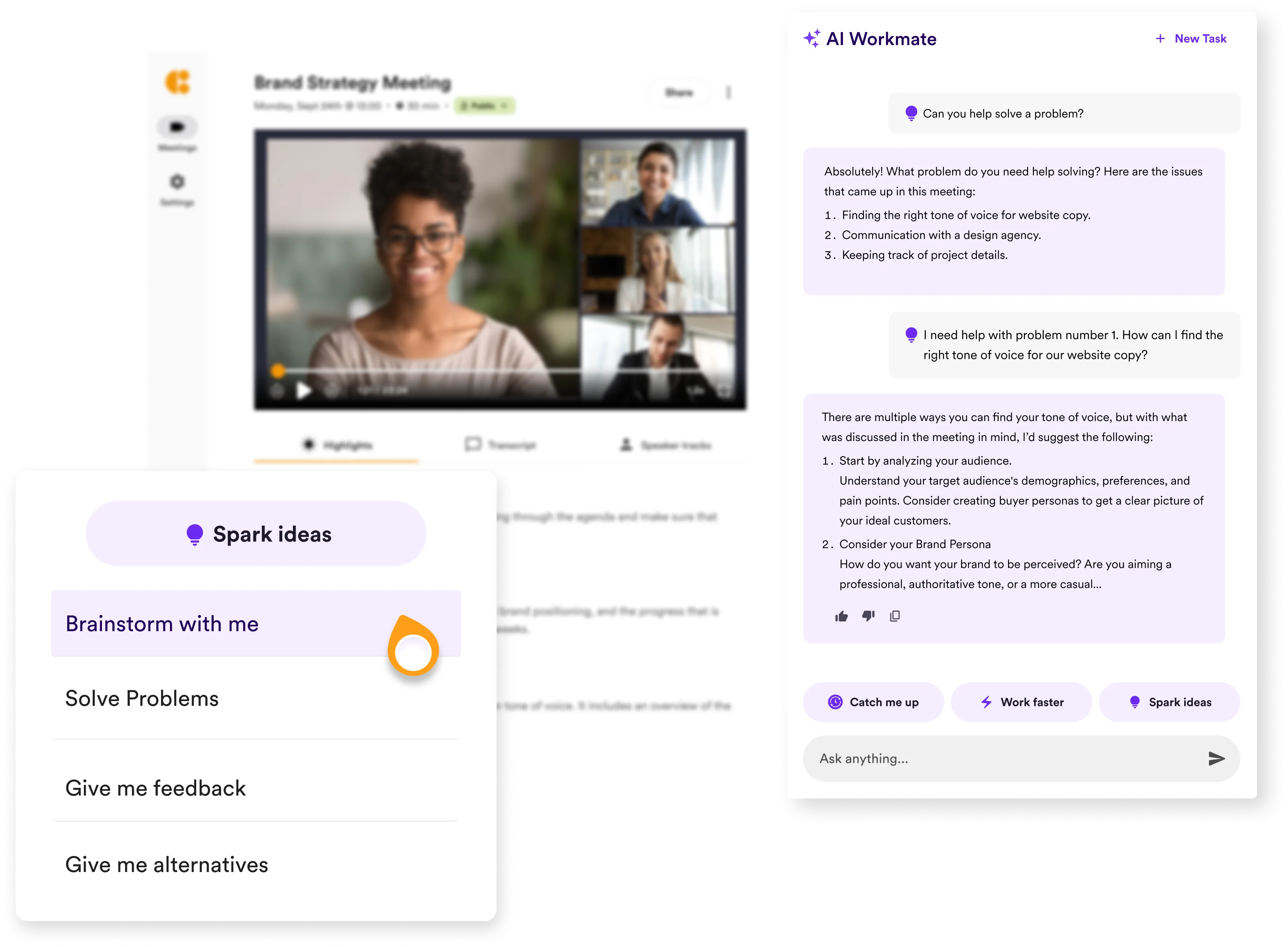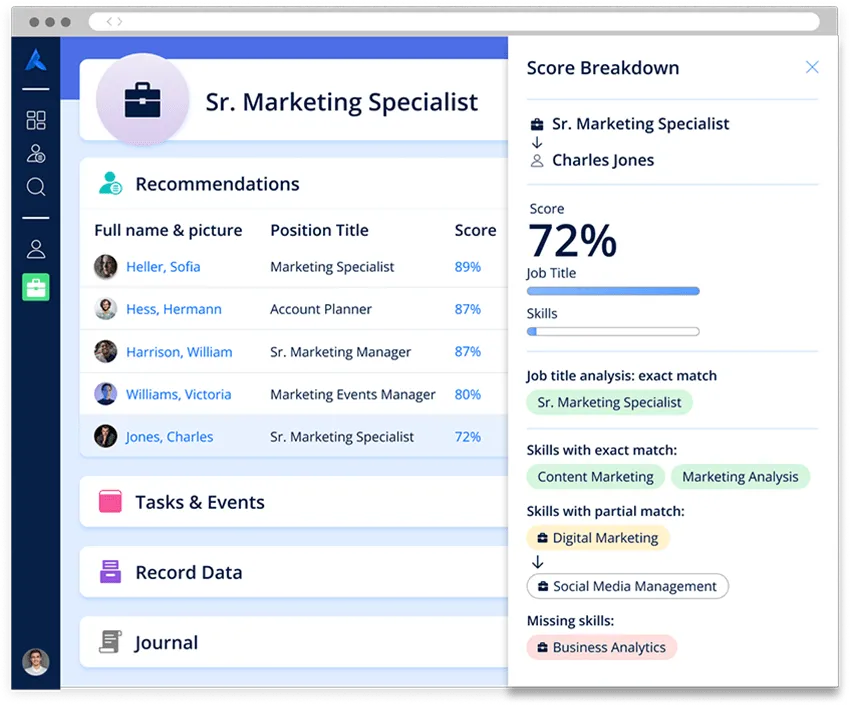Interview Bias : types, examples and ways to mitigate

Interview bias can undermine your hiring process, leading to unfair decisions and poor team diversity.
But what are they and how to prevent them ?
In this guide, we'll look into the different types of interview bias and their impacts. We'll also explore how you can reduce these biases, to make better hiring decisions.
Types of Interview Bias

Interview bias are interviewer's personal prejudices or inclinations influencing their assessment of a candidate. Here are some of the most common biases studied by behavioral researchers:
1. Confirmation Bias
Confirmation bias occurs when you form an early opinion about a candidate and then look for evidence to support that opinion while ignoring contradictory information.
For example, if you read a positive reference before the interview, you might overlook any negative aspects during the interview itself.
2. Affinity Bias
Affinity bias happens when you favor candidates who share similar interests, backgrounds, or experiences.
For instance, if you and a candidate both enjoy the same hobby, you might unconsciously rate them higher, even if the hobby is irrelevant to the job.
3. Halo Effect
The halo effect is when one positive trait of a candidate influences your overall perception of their suitability.
For example, if a candidate is exceptionally well-dressed, you might assume they are also competent and reliable, even without concrete evidence.
4. Horn Effect
The horn effect is the opposite of the halo effect. A single negative trait or mistake, such as a typo on a resume, can disproportionately affect your perception of the candidate's overall abilities.
This can lead to unfairly negative assessments.
5. Nonverbal Bias
Nonverbal bias happens when you give too much weight to nonverbal cues like body language, eye contact, or appearance.
For example, a candidate who maintains poor eye contact might be judged as lacking confidence or honesty, even if their qualifications are excellent.
6. Similarity Bias
Similarity bias occurs when you favor candidates who are similar to yourself in terms of background, education, or personality.
This can lead to a homogeneous team and limit diversity of thought and experience.
7. Cultural Noise
Cultural noise refers to the bias that occurs when candidates give socially desirable answers instead of honest ones.
You might fail to see through these responses and mistakenly view the candidate as a perfect fit for the company culture.
8. Gender Bias
Gender bias involves making assumptions about a candidate's abilities or fit for a role based on their gender.
This can manifest in various ways, such as assuming a female candidate is less suitable for a technical role or questioning a male candidate's suitability for a caregiving position.
9. Racial Bias
Racial bias involves prejudging candidates based on their race or ethnicity.
This can lead to discriminatory practices where candidates from certain racial backgrounds are unfairly disadvantaged during the hiring process.
10. Attribution Bias
Attribution bias occurs when you make assumptions about a candidate's behavior based on your own interpretations rather than objective evidence.
For example, if a candidate arrives late to an interview, you might assume they are disorganized or uncommitted, without considering external factors like traffic or public transport issues.
Impact of Interview Bias

Interview bias can significantly impact your hiring process. Here's how :
- Decreased Quality of Hires : biases like confirmation bias can make you favor candidates who initially seem impressive but lack the necessary skills. For example, you might overlook highly qualified candidates because of minor negative impressions, such as the horn effect, where a single negative trait disproportionately affects your perception.
- Lack of Diversity : biases like similarity bias and affinity bias often lead to hiring people who are similar to you or your existing team. This results in a homogeneous workforce lacking diversity in thought, experience, and background. Diverse teams are more innovative and effective, so reducing bias is crucial for long-term success
- Poor Team Dynamics : a lack of diversity can lead to poor team dynamics and hinder creativity. Different perspectives and experiences are essential for problem-solving and innovation. A homogeneous team might struggle with creative solutions and understanding diverse customer needs.
- Legal and Ethical Concerns : biases such as gender and racial bias can lead to discriminatory hiring practices, which are unethical and illegal. These practices can result in legal consequences and damage your company’s reputation.
- Negative Candidate Experience : candidates who perceive bias during the interview process are likely to have a negative experience, even if they get the job. This can affect their morale and engagement from the start. Additionally, candidates who experience bias are more likely to share their negative experiences, which can harm your employer brand.
6 Strategies to Reduce Interview Bias

Reducing interview bias requires deliberate actions and ongoing effort. Here are some effective strategies you can implement:
1.Structured Interviews
Use a standardized list of questions for every candidate. This ensures consistency and fairness in the interview process.
Studies have shown structured interviews help you focus on job-related criteria and reduce the influence of personal biases. By asking all candidates the same questions in the same order, you can objectively evaluate their responses.
2. Blind Recruitment
Remove identifying information from applications, such as names, photos, or addresses.
This prevents biases based on gender, race, or age from influencing your decisions. Blind recruitment ensures that candidates are judged solely on their qualifications and experience. This has been shown to increase diversity in hiring.
3. Interview Scorecards
Develop clear, quantifiable notation for evaluating candidates like scorecards.
Scorecards helps you rate and compare candidates with numbers and coefficients, reducing the influence of personal biases. They provide a clear, consistent method for comparing candidates' skills and qualifications.
4. Training for Interviewers
Provide regular training on unconscious bias and inclusive hiring practices.
Training helps interviewers recognize and mitigate their biases, which is crucial for creating a fairer hiring process. Training should cover common biases, their impact, and strategies to avoid them.
5. Diverse Hiring Panels
Involve a diverse group of interviewers in the hiring process.
Different perspectives can help identify and counteract biases. A diverse panel ensures a more balanced evaluation of candidates and promotes a more inclusive hiring environment.
6. Behavioral Interview Techniques
Use behavioral questions to assess candidates' past experiences and actions.
This method focuses on concrete examples rather than hypothetical scenarios. Behavioral interviews provide a more objective basis for evaluating candidates' suitability for the role.
Real-World Bias Examples and Scenarios
What does bias concretely look like in the real world ?
Here are a some of the most common scenarios you can face as a recruiter everyday :
Example 1: Affinity Bias
Scenario: You’re interviewing a candidate who went to the same university as you. During the interview, you find yourself more engaged and enthusiastic about their responses compared to other candidates.
Solution: To counteract this affinity bias, use a structured interview process. Ask each candidate the same questions and focus on their answers rather than shared experiences. Use a diverse hiring panel to provide multiple perspectives and reduce personal biases.
Example 2: Halo Effect
Scenario: A candidate arrives well-dressed and speaks confidently. Impressed by their appearance and demeanor, you overlook gaps in their experience and qualifications.
Solution: Implement interview scorecards to evaluate candidates on specific criteria relevant to the job. This ensures you focus on the candidate’s qualifications and performance rather than their appearance.
Example 3: Horn Effect
Scenario: During an interview, a candidate makes a minor mistake, such as stumbling over a question. You become overly critical and assume they are not competent.
Solution: Use behavioral interview techniques that focus on candidates’ past experiences and actions. Ask follow-up questions to get a complete picture of their abilities. Maintain objectivity by comparing their responses to predefined criteria.
Example 4: Gender Bias
Scenario: You unconsciously assume a female candidate is less suited for a technical role compared to male candidates. This assumption affects your questioning and evaluation.
Solution: Blind recruitment practices can help mitigate gender bias. Remove gender identifiers from resumes before reviewing them. Ensure that interview questions are job-specific and not influenced by gender stereotypes.
Example 5: Nonverbal Bias
Scenario: One of the candidate you're interviewing doesn't look you regularly in the eye and display a closed body language. You diminishes in your mind the perception of his/her competence.
Solution: Focus on job-related skills and experiences. Use a scoring system to evaluate candidates based on their answers rather than their nonverbal behavior. Train interviewers to recognize and mitigate this bias.
Mitigating Interview Bias : Noota AI Assistant

You want to reduce bias and conduct fairer interviews ? Noota helps you create a more objective and structured interview process:
- Complete Documentation: Noota records all your interviews, ensuring you capture every detail. This prevents bias that can occur from relying on memory or incomplete notes. You can also revisit the recordings to verify facts and ensure consistency.
- Fast Cross Check : Transcripts are searchable, making it easy to find and review specific parts of the conversation. This feature helps you cross-check information and ensure you assess candidates fairly based on their actual responses.
- Comprehensive Evaluation: Noota generates AI reports that include include key points, highlights, and a summary of each candidate's responses. This comprehensive evaluation helps you make more informed decisions by providing a clear and unbiased overview of each candidate’s strengths and weaknesses.
- Easy Comparison of Candidates : Noota’s structured reports standardize the data, allowing you to compare candidates on an equal footing. This helps you identify the best fit for the role based on objective criteria rather than personal biases.
You want to significantly reduce interview bias ? Try Noota for free.
Leverage your Interview Data
AI interview notes, scorecard, follow-up, ATS integration, and more...
Related articles

Forget note-taking and
try Noota now
FAQ
In the first case, you can directly activate recording as soon as you join a videoconference.
In the second case, you can add a bot to your videoconference, which will record everything.
Noota also enables you to translate your files into over 30 languages.

.svg)
.svg)
.webp)

.png)


.svg)
